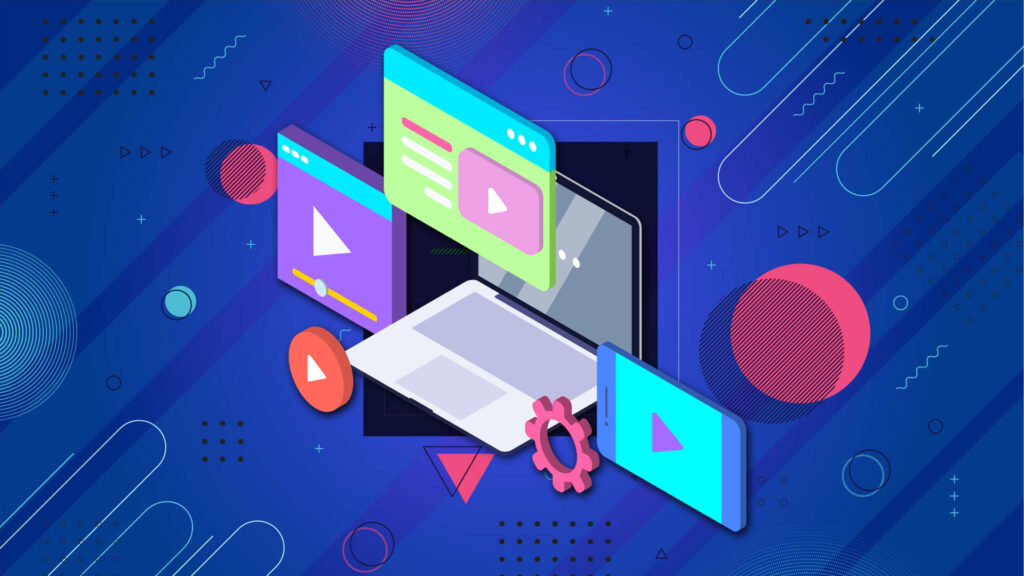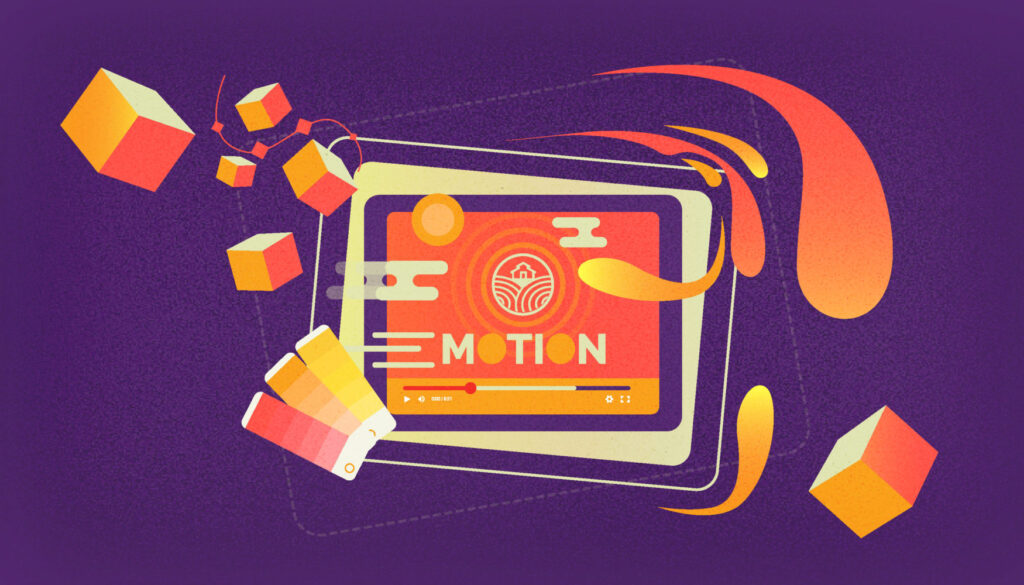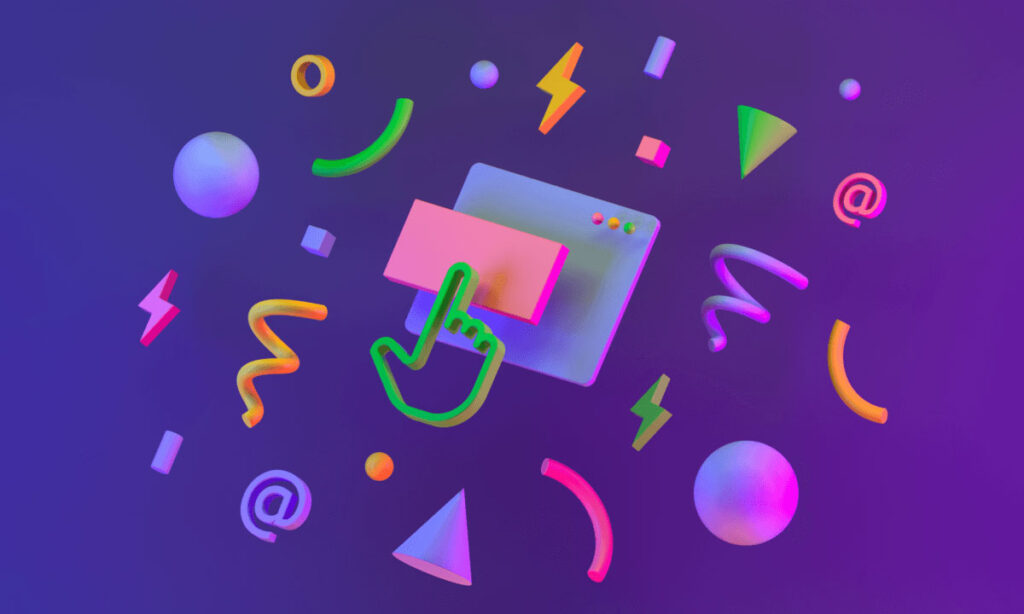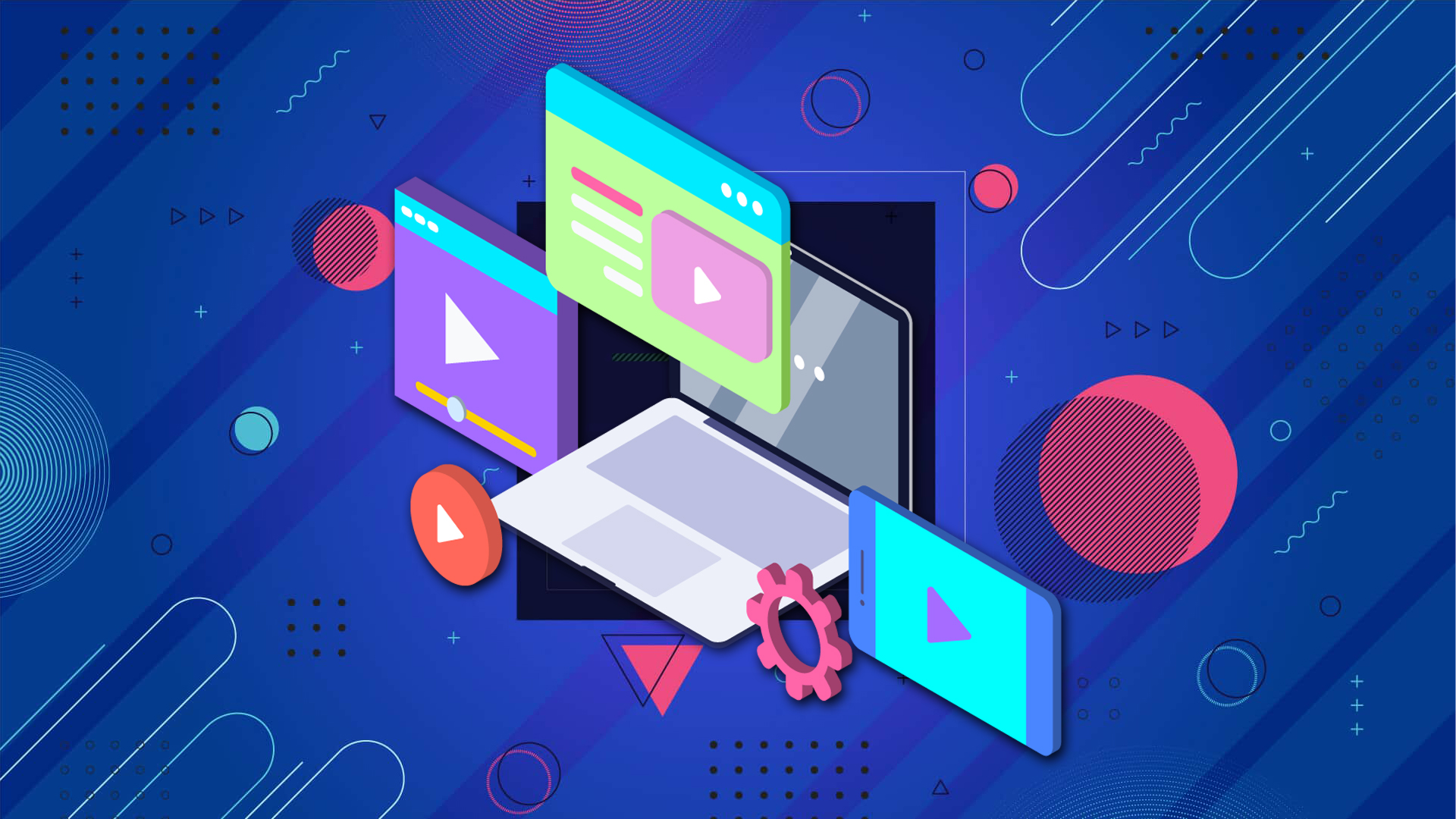It’s no longer enough for websites to merely be functional.
To truly stand out, websites need to engage, entertain, and guide users effortlessly through their journey.
Enter motion design, the unsung hero of modern web design. Motion graphics breathe life into static pages, transforming them into dynamic experiences that captivate and convert.
But what exactly is motion design? How does it differ from other forms of animation? And why should indie makers or web designers care about incorporating it into their projects?
In this article, we’ll explore those questions and look at benefits, principles, and practical applications. We’ll also look at some inspiring examples and discuss the future of motion design in web development.

What is Motion Design?
Motion design, also known as motion graphics, refers to the art of using animation or visual effects to create the illusion of motion in a digital context.
While traditional animation focuses on storytelling through characters and narratives, motion design is more concerned with enhancing the visual experience of users by adding movement to graphic elements. Elements like text, shapes, icons, and images.
In web design, motion design plays a crucial role in guiding users, emphasizing key content, and providing feedback on interactions.
Whether it’s a subtle hover effect, a smooth transition between pages, or a playful loading animation, motion design helps to create a more immersive and engaging user experience.
The Evolution of Motion Design in Web Design
Motion design has come a long way since the early days of the internet, where web pages were often cluttered with blinking text, flashing banners, and obnoxious GIFs.
These early attempts at animation were often more distracting than helpful, leading to a general aversion to animated elements in web design.
However, as web technologies have evolved, so too has the sophistication and subtlety of motion design.
With the advent of CSS3 animations, HTML5, and powerful JavaScript libraries like GreenSock (GSAP), web designers now have the tools to create smooth, fluid animations that enhance the user experience rather than detract from it.
This shift in technology has allowed motion design to become an integral part of modern web design, providing a way to add depth, interactivity, and personality to websites.
Today, motion design is no longer seen as a gimmick, but rather as a vital tool for creating intuitive and engaging user experiences.
The Benefits of Motion Design in Web Design
Incorporating motion design into web design offers a plethora of benefits, from enhancing user engagement to improving usability.
Here are some key reasons why motion design should be a staple in your website’s toolkit:
Improved User Engagement
Attention spans today are notoriously short, so capturing and retaining user attention can be a significant challenge.
Motion design helps to grab users’ attention and guide them through the content by adding visual interest and breaking up the monotony of static pages.
For example, a subtle hover animation can draw attention to a call-to-action button, while a dynamic loading animation can keep users entertained during brief loading times.
Enhanced Usability
Motion design is not just about making a website look good; it’s also about improving the overall user experience.
By using animations to provide feedback on user interactions (such as a button changing color when clicked or an icon spinning to indicate processing), designers can create a more intuitive and user-friendly interface.
Additionally, animations can be used to guide users through complex processes, such as filling out a form or navigating a multi-step checkout process.
Stronger Brand Identity
Motion design offers a unique opportunity to reinforce brand identity by incorporating elements that reflect the brand’s personality and values.
For instance, a playful animation style might be suitable for a brand targeting a younger audience, while a sleek, minimalist approach might align with a luxury brand.
By carefully considering the style and tone of animations, designers can create a cohesive and memorable brand experience that resonates with users.
Increased Conversion Rates
When used strategically, motion design can play a pivotal role in driving conversions.
Animations can draw attention to key content, such as special offers or product features, and encourage users to take action.
For example, an animated progress bar can create a sense of urgency during a limited-time sale, while a smooth transition between product images can help showcase a product’s versatility and appeal.
By guiding users toward desired actions, motion design can contribute to higher conversion rates and a better return on investment.

Principles of Effective Motion Design
While motion design can offer numerous benefits, it’s important to approach it with care and consideration.
Poorly executed animations can lead to a cluttered, distracting, and frustrating user experience.
To ensure that motion design enhances rather than detracts from your website, here are some key principles to keep in mind:
Purpose-Driven Animation
Every animation on your website should serve a specific purpose, whether it’s to guide the user, provide feedback, or reinforce brand identity.
Avoid using animations for the sake of it; instead, think about how each motion element contributes to the overall user experience.
For example, a subtle animation that highlights a call-to-action button can help direct users’ attention, while a hover effect on a navigation menu can provide valuable feedback on user interactions.
Consistency and Cohesion
Consistency is key when it comes to motion design.
Animations should follow a consistent style, speed, and behavior throughout the website to create a cohesive experience.
This consistency helps users build a mental model of how the website works, making it easier to navigate and interact with. For instance, if your buttons have a specific hover animation, ensure that all buttons on the site behave similarly.
Timing and Easing
The timing and easing of animations play a crucial role in how they are perceived by users.
Too fast, and the animation may go unnoticed; too slow, and it may become frustrating.
Easing refers to the acceleration and deceleration of an animation, which can make it feel more natural and fluid.
For example, using an “ease-in-out” easing function can make an animation feel smoother and more organic, as it starts slowly, accelerates, and then slows down again before stopping.
Subtlety and Restraint
When it comes to motion design, less is often more.
Subtle animations can add polish and professionalism to a website without overwhelming the user.
Overuse of animation, on the other hand, can lead to a chaotic and distracting experience. It’s important to strike a balance between adding visual interest and maintaining a clean, user-friendly interface.
Real-World Applications
Now that we’ve covered the principles of effective motion design, let’s explore some real-world applications and examples of how motion design is being used to create engaging and dynamic websites:
Microinteractions
Microinteractions are small, subtle animations that provide feedback on user interactions.
They can be as simple as a button changing color when clicked or an icon animating to indicate a successful action.
While microinteractions may seem insignificant, they play an important role in enhancing the overall user experience by making the interface feel more responsive and intuitive.
For example, Mailchimp uses microinteractions to add a playful and human touch to its interface. When users complete a task, they are rewarded with a cheerful animation of the Mailchimp mascot, Freddie, giving a thumbs-up or high-five.
This small gesture adds a sense of accomplishment and delight, encouraging users to continue engaging with the platform.
Loading Animations
Nobody likes waiting for a page to load, but a well-designed loading animation can make the experience more bearable—or even enjoyable.
Loading animations can be used to entertain users during brief loading times, provide a sense of progress, or reinforce brand identity.
Take Duolingo, for instance. When users are waiting for their next lesson or language challenge to load, they’re greeted with playful animations featuring the Duolingo owl mascot, Duo.
These animations might show Duo waving, flying, or even doing a little dance. They add a lighthearted, friendly touch that aligns perfectly with Duolingo’s fun and approachable brand identity.
The animations are simple yet engaging, helping users feel less frustrated by the wait and keeping them focused on their language-learning journey.
By incorporating these charming loading animations, Duolingo manages to transform a potentially dull moment into an opportunity to reinforce its brand’s personality and keep users entertained.
Page Transitions
Page transitions are animations that occur when users navigate from one page to another, or one section to another.
These transitions can be used to create a smooth, seamless experience, reducing the perceived load time and making the website feel more cohesive.
One example of effective page transitions is found on the website of the design agency Phantasm Graphics. As users scroll through the site, sections fade in and out with smooth transitions, creating a fluid and immersive browsing experience.
These transitions also help to maintain the agency’s creative and colorful design aesthetic.
Interactive Infographics
Infographics are a popular way to present data and information visually, but adding motion can take them to the next level.
Interactive infographics allow users to explore data in a more engaging and dynamic way, with animations that respond to user input.
For example, the New York Times often uses interactive infographics to tell stories with data. These animations help to make complex data more understandable and compelling.
Parallax Scrolling
Parallax scrolling is a technique where the background elements move at a different speed than the foreground elements as users scroll down the page.
This creates a sense of depth and immersion, making the website feel more dynamic and engaging.
Apple is known for its use of parallax scrolling and page transitions on its product pages.
As users scroll through the page, images and text move at different speeds, creating a 3D-like effect that draws attention to the product’s features and design details.
This technique helps to create a more immersive and visually striking experience.

The Future of Motion Design in Web Design
As technology continues to advance, the possibilities for motion design in web design are expanding.
Here are some trends and innovations to watch for in the future of motion design:
Virtual and Augmented Reality
Virtual reality (VR) and augmented reality (AR) are opening up new possibilities for motion design in web design.
With VR and AR, designers can create immersive, 3D environments that users can explore and interact with in real-time. This could be used for everything from virtual product showcases to interactive storytelling experiences.
AI-Driven Animation
Artificial intelligence (AI) is poised to revolutionize motion design by enabling more personalized and adaptive animations.
For example, AI could be used to generate animations based on user behavior, preferences, or environmental factors, creating a more tailored and dynamic user experience.
Motion Design for Mobile
As mobile browsing continues to dominate, motion design for mobile devices will become increasingly important.
Designers will need to consider how animations can enhance the mobile experience, while also optimizing for performance and accessibility on smaller screens and slower connections.
Interactive and Data-Driven Motion
Interactive and data-driven motion design will continue to evolve, allowing users to engage with content in more meaningful ways.
This could include everything from real-time data visualizations to personalized animations that respond to user input and preferences.
Conclusion
Motion design is much more than a trend or a nice-to-have feature—it’s a powerful tool that can transform websites from static pages into dynamic, engaging experiences that convert.
By carefully considering the principles of effective motion design, and by incorporating purposeful, consistent, and subtle animations, designers can create websites that not only look great but also function beautifully.
Whether it’s through microinteractions, loading animations, page transitions, or interactive infographics, motion design has the potential to elevate the user experience, strengthen brand identity, and drive conversions.
As we look to the future, it’s clear that motion design will continue to play a vital role in SaaS and AI web design.


